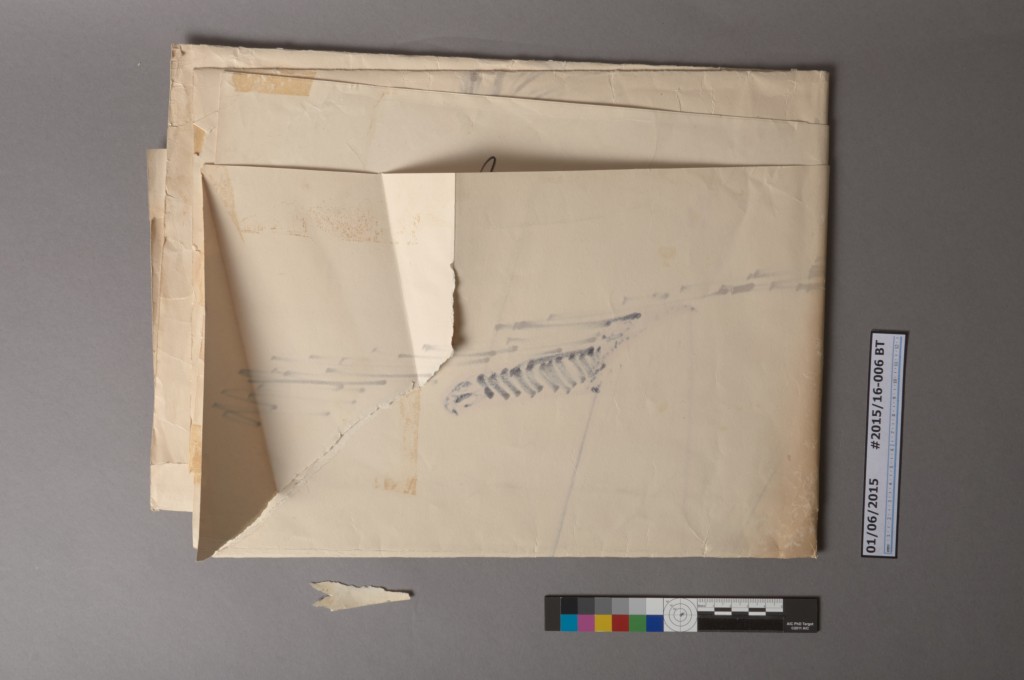Eddie Cameron is a very well known figure around campus. His forty-six year career with the athletics program is the second longest tenure in Duke’s history and our indoor stadium was renamed for him in 1972.

The Edmund M. Cameron Records in the University Archives consists of nearly 14 linear feet of materials produced during his career, and includes three large scrapbooks. Those scrapbooks were adopted for conservation treatment recently through our Adopt-a-Book Program and, over the course of treating one of them, I was able to (quite literally) see Cameron in a whole new way.
Two of the scrapbooks in the collection focus on particular bowl games, but the third is a more general collection of photographs and newspaper clippings from Cameron’s time at Duke. The scrapbook is no longer bound and is currently stored as loose sheets in an over-sized records box.
During my initial examination, I came across a large folded sheet at the bottom of the stack, which I could pretty quickly tell was a large drawing executed with a few different colors of marker.

The thick, machine-made paper had been folded in half three times so that it could fit inside the scrapbook. Two of the edges of the sheet had been rough-cut with scissors, leading me to believe that the paper came off of a large roll. Short pieces of masking tape had been applied along the outer edges of the sheet, presumably to mount it on a wall. There were also stains along the folds and some significant scarf tears. In consultation with the University Archivist, the decision was made to unfold and repair this drawing. We decided not to pursue stain reduction as a part of this treatment, but it could be an option for the future.
The adhesive of the masking tape had become desiccated and powdery, so I was able to simply remove the carrier layer of the tape and gently brush adhesive from the paper surface. The front and back of the poster were then dry-cleaned with white vinyl eraser crumbs to remove any surface dirt or grime. Since the paper was quite thick and had not become brittle, I was able to unfold the sheet during cleaning, but it remained heavily creased and undulated. After testing all of the inks for solubility, the folded poster was placed in a humidity chamber for a couple of hours and then moved to a large felt stack to press for several weeks. When fully flattened, the tears were mended with toned Japanese paper and wheat starch paste.

The drawing is not signed and we may never know the name of the artist, but I really like it. I think that it captures Cameron’s likeness pretty successfully. The unfolded poster is quite large (39″ x 30″), so it was placed in a Bristol board folder and will now live safely in flat file storage.
I am wrapping up treatment on the three Cameron scrapbooks now. With some repairs and new enclosures, they are now much easier to handle and have already been getting some use. On March 1, the New Era Pinstripe Bowl trophy was on display in Perkins Library, along with other historical Duke football memorabilia from the University Archives. Cameron’s scrapbook about the 1945 Sugar Bowl was one of the items on display.



